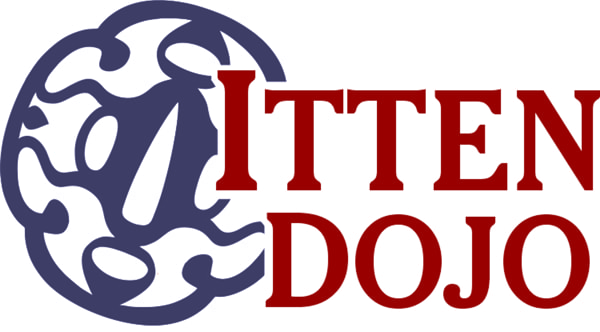Safe, systematic instruction for beginners!
When you step into the dojo for your first practice, you’ll likely be feeling equal parts nervous and excited. And maybe even thinking, “Oh boy. What have I done?”
What you’ll have done, in fact, by deciding to train in traditional, Japanese martial arts, is to start on a journey very few other people in the world even attempt. You’ll already be someone out of the ordinary. And it only gets better from there.
Collectively, the traditional arts are referred to as budo (martials Ways)—warrior arts that continue methods of training dating back prior to the dissolution of the samurai and the beginning of the modern era in Japan. Budo offers adults and teens today a compelling alternative to the latest fitness fad or self-improvement regimen, an alternative that has remained fresh and viable for literally hundreds of years. Building fitness and strength, socializing with a diverse and exceptional group of like-minded individuals, and a learning environment designed to engender intellectual and spiritual insights—budo provides all this and more.
At Itten Dojo you’ll have access to a variety of Japanese arts, a selection unmatched in this area. Although many members of the dojo eventually train in more than one art—and there is no additional cost to do so, other than the expense of different uniforms and equipment—we require new members choose just one art to start with. How does a potential student choose the initial art he or she would like to study? The decision must be based on personal preference. The following thoughts might be a guide:
- If you’re looking for vigorous, almost acrobatic exercise in an art that is exceptionally challenging, practical unarmed self-defense, and a tactical/philosophical foundation equaling that of the swordsmanship from which it derives, jujutsu would be a good choice.
- If you have an interest in very combative and aggressive, classical swordsmanship and the actual training methods of the samurai, and are not as concerned with unarmed self-defense, kenjutsu might be the best fit.
- If you are primarily looking for a more introspective and spiritual form of classical swordsmanship that still provides good exercise and a very high degree of physical and mental integration, iaido is recommended.
As far as basic body mechanics and core principles are concerned, the arts of iaido and jujutsu are most closely related and highly complementary. There are men, women, and teens training in each of the three arts. And all of the arts are a great deal of fun.
Regardless of which art you choose, you’ll be guided very carefully by expert instructors as you grow accustomed to the training and build the requisite level of fitness and flexibility. You don’t need to be in shape to start. You’ll be challenged to expand your capabilities, but gradually and safely, and never in a way for which you don’t feel ready.
Another thing you won’t be asked to do is sign a membership contract. We want you to be in the dojo because you want to be in the dojo; not because you feel obligated to complete a long-term agreement.
So, what are you waiting for?
Call or email today for an appointment and come see for yourself — visitors are always welcome!
